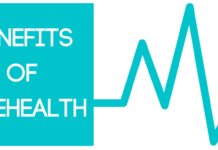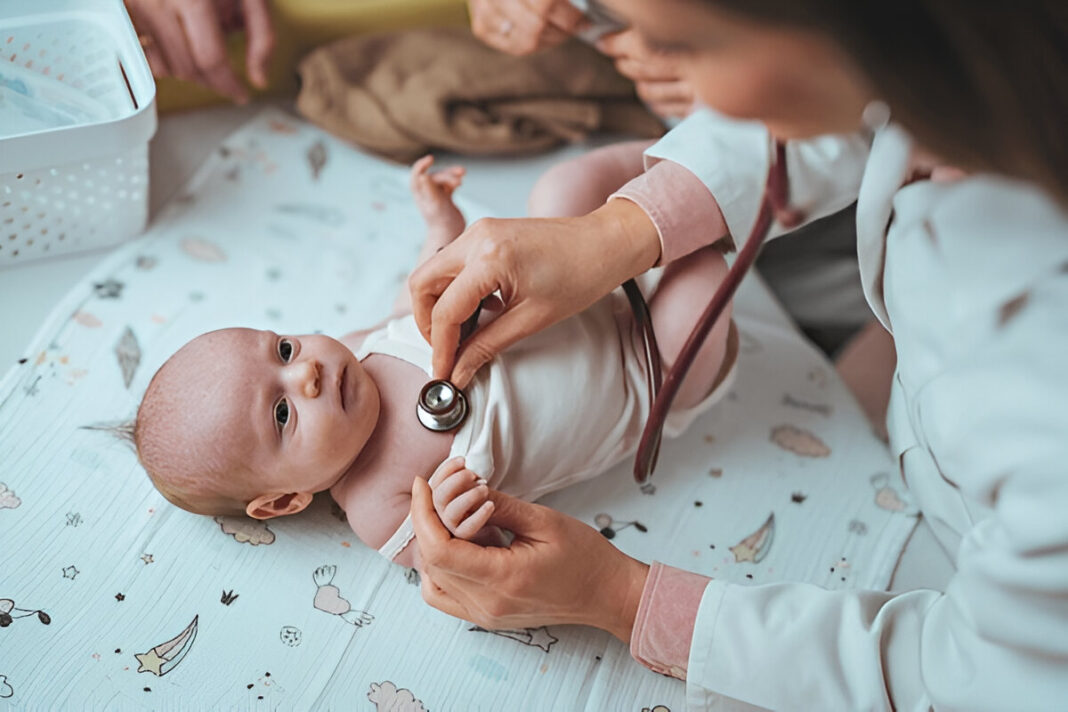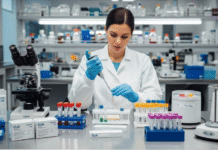The skin, our largest organ, often gives the first clues to underlying genetic conditions especially in newborns. Some rare but serious genetic skin disorders in newborns are visible at or shortly after birth. These conditions not only affect the skin but may also indicate systemic involvement requiring urgent care. Prompt recognition by healthcare providers can significantly improve outcomes through early diagnosis, genetic counseling, and supportive management.
Why Early Recognition Matters
Newborns with abnormal skin findings may have conditions that:
- Affect skin integrity and increase the risk of infection
- Cause fluid and electrolyte imbalances
- Indicate multisystem genetic syndromes
- Require early referral to dermatologists or geneticists
A vigilant assessment of skin color, texture, blisters, scaling, or unusual birthmarks can be life-saving in some cases.
Common Genetic Skin Disorders in Newborns
1. Epidermolysis Bullosa (EB)
A group of rare disorders characterized by fragile skin that blisters with minimal friction or trauma.
What to look for at birth:
- Blisters or erosions on hands, feet, or areas of pressure (e.g., diaper line)
- Raw or ulcerated skin at birth
- Nail abnormalities
EB ranges from mild forms (localized to the hands and feet) to severe, life-threatening variants like junctional EB, which may involve mucosal surfaces and internal organs (Fine et al., 2008).
2. Congenital Ichthyosis
Ichthyoses are a group of genetic disorders leading to abnormal skin scaling. The most severe form present at birth is harlequin ichthyosis.
What to look for at birth:
- Thick, plate-like scales
- Taut, shiny skin with cracks (fissures)
- Ectropion (outward turning of the eyelids)
- Eclabium (outward turning of the lips)
Infants are at high risk of dehydration, infection, and difficulty feeding (Rajpopat et al., 2011). Milder forms like lamellar ichthyosis may appear as generalized scaling over the body.
3. Incontinentia Pigmenti (IP)
A rare X-linked dominant disorder typically affecting female infants, characterized by a staged skin eruption followed by pigment changes.
What to look for at birth:
- Blistering rash along the lines of Blaschko
- Wart-like lesions that evolve into swirling hyperpigmentation
- Possible dental, ocular, or central nervous system involvement
Early diagnosis is important for neurological monitoring and eye exams, as IP can lead to vision loss and seizures in some cases (Phan et al., 2005).
4. Nevus Sebaceous and Other Congenital Nevi
These are benign skin growths that may be visible at birth or within the first weeks of life.
What to look for at birth:
- Yellowish, hairless plaques usually on the scalp or face
- Large, pigmented patches or “bathing trunk” nevi
While often benign, some nevi can be associated with neurocutaneous syndromes like neurofibromatosis or epidermal nevus syndrome, especially if there are neurological symptoms or skeletal abnormalities.
5. Albinism
A group of genetic conditions resulting in absent or reduced melanin production, affecting the skin, hair, and eyes.
What to look for at birth:
- Pale skin and white or very light hair
- Nystagmus (involuntary eye movements)
- Photophobia or poor vision
While the skin is generally healthy, ocular involvement is significant and requires early ophthalmologic referral (Kamaraj & Purohit, 2014).
Diagnostic Tools and Next Steps
When a genetic skin disorder is suspected in a newborn, a structured approach should be taken:
- Detailed clinical examination by neonatologists and dermatologists
- Skin biopsy in selected cases (e.g., suspected EB)
- Genetic testing to confirm diagnosis and identify mutation types
- Multidisciplinary evaluation if syndromic features are present (neurology, ophthalmology, endocrinology)
Family history and parental consanguinity may provide important diagnostic clues.
Parental Counseling and Support
Discovering a genetic skin disorder in a newborn can be emotionally overwhelming for families. Early, empathetic communication and clear explanations of:
- The diagnosis and prognosis
- Available treatment or management options
- Genetic inheritance patterns and future risks
- Need for long-term follow-up
are essential. Connecting families with support groups, such as DEBRA for EB or FIRST for ichthyosis, provides community and practical advice.
Advances in Treatment
Though many genetic skin conditions are incurable, significant advances are emerging:
- Gene therapy trials are underway for EB
- Retinoids and barrier-enhancing emollients help manage ichthyosis
- Customized skincare regimens reduce risk of infections and discomfort
- Multidisciplinary care ensures better developmental outcomes in syndromic cases
With early and tailored interventions, many affected children can lead healthy and fulfilling lives.
Genetic skin disorders in newborns may be rare, but their early recognition can be life-changing. By knowing what to look for at birth blisters, scaling, unusual pigmentation, or abnormal nevi healthcare professionals can initiate timely interventions, support families, and guide appropriate follow-up. As genomic medicine and dermatologic research evolve, the future holds increasing promise for these young patients and their caregivers.
References
- Fine, J. D., Bruckner-Tuderman, L., Eady, R. A., Bauer, E. A., Bauer, J. W., Has, C., … & Zambruno, G. (2008). Inherited epidermolysis bullosa: updated recommendations on diagnosis and classification. Journal of the American Academy of Dermatology, 58(6), 931–950. https://doi.org/10.1016/j.jaad.2008.01.011
- Rajpopat, S., Moss, C., Mellerio, J., Vahlquist, A., Glover, M., Olsson, M., … & Kelsell, D. P. (2011). Harlequin ichthyosis: A review of clinical and molecular findings in 45 cases. Archives of Dermatology, 147(6), 681–686. https://doi.org/10.1001/archdermatol.2011.7
- Phan, K., Searle, T., & Sharma, R. (2005). Incontinentia pigmenti: clinical perspective and diagnostic approach. Pediatric Dermatology, 22(2), 161–166. https://doi.org/10.1111/j.1525-1470.2005.22203.x
- Kamaraj, B., & Purohit, R. (2014). Mutational analysis of oculocutaneous albinism: A review. Human Genetics & Genomic Medicine, 2(2), 58–64. https://doi.org/10.1002/hgg3.49











